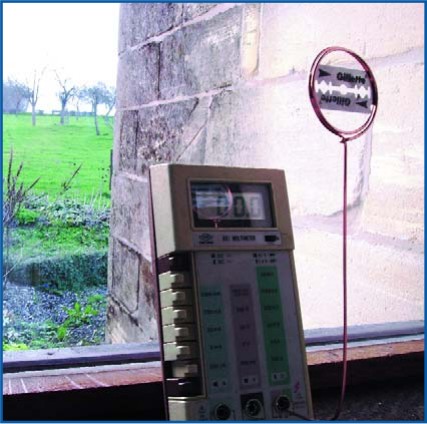Home » Circuits
Multimeter as Lightning Detector
Most digital multimeters have a sensitivity of 200 mV and in input impedance of 10 MR. With this information you can calculate that at full scale there will be a current of 20 nA (nano-ampères). In reality you have a very sensitive ammeter in your hand. Now that we know this, it becomes a mission to do something with that knowledge. In other words, here is a solution that requires a problem...For example, try the following: Connect the ‘COM’ of the voltmeter to ground (safety earth from a power point, central heating, plumbing, etc.). Connect an old bicycle wheel spoke or a length of thin copper wire to the ‘V’ socket so that you get a kind of antenna. When you place this impressive looking apparatus on a windowsill during a thunderstorm and set the meter to the 200 mV range, you will, with a bit of luck, see nice deflections during lightning strikes. A nice thing is that you will see a build-up of static charge long before the flash, and immediately after the lightning flash the charge is gone.
Circuit diagram:
Be aware of your own safety and those of others: Don’t walk out-side with the thing or surreptitiously lead the ‘antenna’ to the outside. This is really dangerous. In these modern times people still die from lightning strikes! According to theory it is possible to improve the lightning detector somewhat. A sharp point or edge collects more than a rounded one. You probably have a razor blade somewhere. Attach this razor blade at the top of the antenna. And again, be careful: keep children and pets away. In the picture you can see an assembly were the top of the antenna has one turn.
The razor blade is clamped in this and in addition it is a lot harder to injure yourself this way. The ‘reception’ can be improved a lot more by ionising the air in the region of the antenna with the aid of radioactivity. Most of the mantles used in gas and petroleum lamps contain a small amount of radioactive material and also smoke detectors that work with an ionisation chamber are (lightly) radioactive. It is better to leave the smoke detectors alone, because they often contain very poisonous substances, but a piece of lamp mantle could be secured to the razor blade with some two-component epoxy glue.
Author: Karel Walraven - Copyright: Elektor Electronics Magazine

